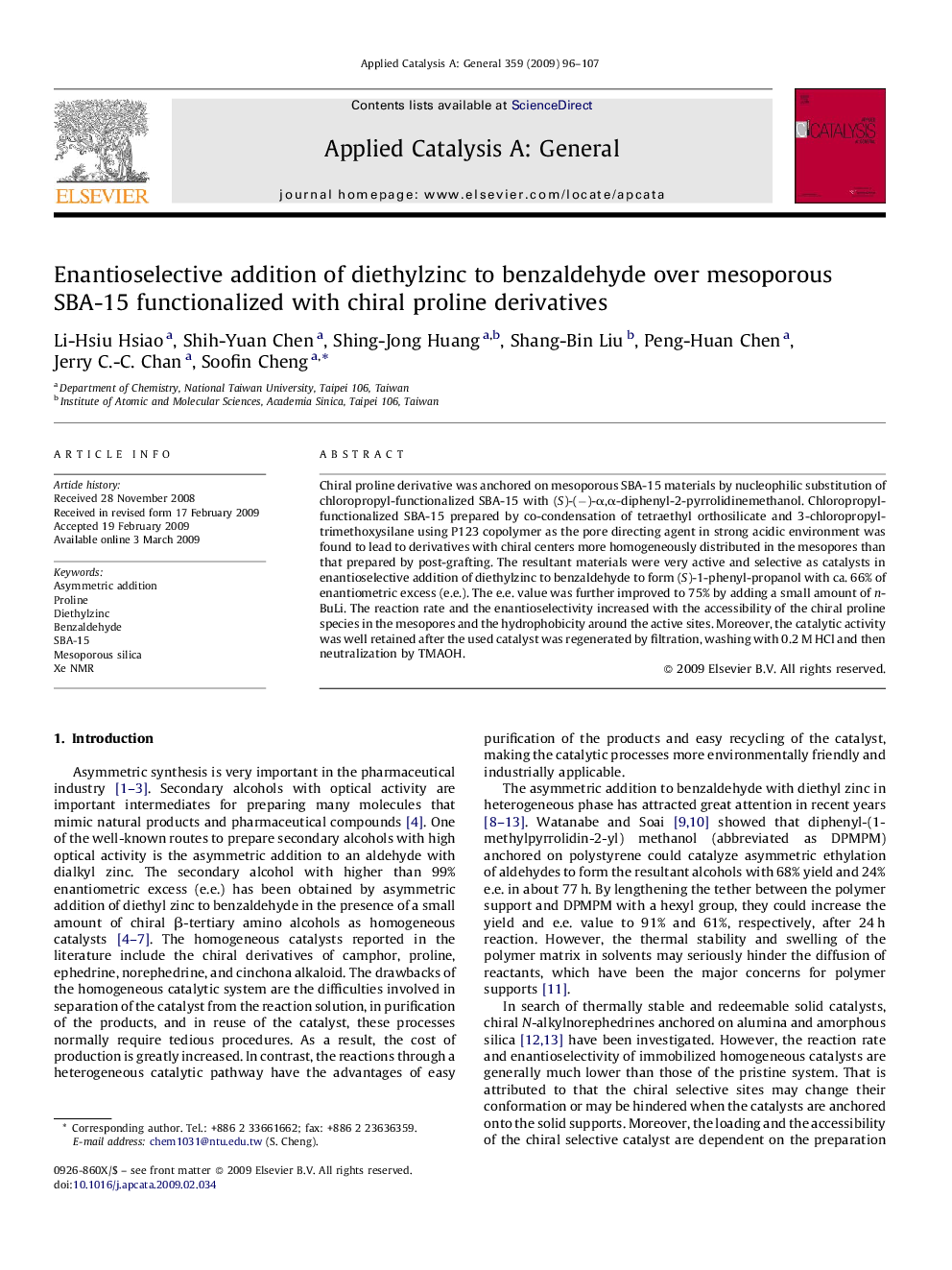| Article ID | Journal | Published Year | Pages | File Type |
|---|---|---|---|---|
| 42525 | Applied Catalysis A: General | 2009 | 12 Pages |
Chiral proline derivative was anchored on mesoporous SBA-15 materials by nucleophilic substitution of chloropropyl-functionalized SBA-15 with (S)-(−)-α,α-diphenyl-2-pyrrolidinemethanol. Chloropropyl-functionalized SBA-15 prepared by co-condensation of tetraethyl orthosilicate and 3-chloropropyltrimethoxysilane using P123 copolymer as the pore directing agent in strong acidic environment was found to lead to derivatives with chiral centers more homogeneously distributed in the mesopores than that prepared by post-grafting. The resultant materials were very active and selective as catalysts in enantioselective addition of diethylzinc to benzaldehyde to form (S)-1-phenyl-propanol with ca. 66% of enantiometric excess (e.e.). The e.e. value was further improved to 75% by adding a small amount of n-BuLi. The reaction rate and the enantioselectivity increased with the accessibility of the chiral proline species in the mesopores and the hydrophobicity around the active sites. Moreover, the catalytic activity was well retained after the used catalyst was regenerated by filtration, washing with 0.2 M HCl and then neutralization by TMAOH.
Graphical abstractChiral proline was anchored on SBA-15 by nucleophilic substitution of chloropropyl-SBA-15 with (S)-(−)-α,α-diphenyl-2-pyrrolidinemethanol. Chloropropyl-SBA-15 prepared by co-condensation led to derivatives with chiral centers more homogeneously distributed in the mesopores than that prepared by post-grafting. The reaction rate and enantioselectivity increased with the accessibility of the chiral proline species in the mesopores and the hydrophobicity around the active sites.Figure optionsDownload full-size imageDownload as PowerPoint slide
